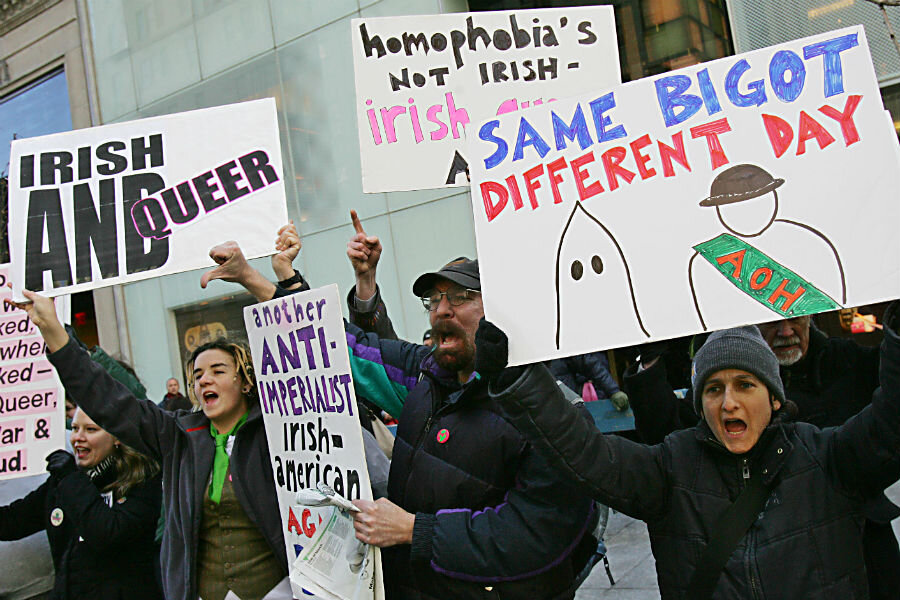Why N.Y.C. Mayor de Blasio will now march in St. Patrick's Day parade
Loading...
After two years of boycotting the nation's largest St. Patrick's Day parade, New York Mayor Bill de Blasio will take part in the parade for the first time after its organizers decided to repeal a ban on gay and lesbian groups.
"The St. Patrick's Day Parade is a New York City tradition, but for years Irish LGBT New Yorkers could not show their pride," Mr. de Blasio said before making a formal announcement. "Finally, they can celebrate their heritage by marching in a parade that now represents progress and equality."
After being elected in 2013, de Blasio became the first mayor in more than 20 years to refuse to participate in the 255-year-old New York tradition, boycotting parade policy prohibiting gay groups from openly marching under their own banners. He continued his boycott in 2015, when only a small lesbian, gay, bisexual, and transgender (LGBT) group, OUT@NBCUniversal, was permitted to march.
“A lot of people feel, I think rightfully, that that is too small a change to merit a lot of us participating who have wanted to see an inclusive parade,” he said at the time.
But this year, the Lavender and Green Alliance, an Irish LGBT group that organizes a competing St. Patrick’s Day parade in Queens called St. Patrick's For All, will have its own banner in the main parade, under which more than 300 people will march.
The group’s leader, Brendan Fay, praised de Blasio for his influence over the parade organizers.
"Our hearts will be dancing," he said.
But not everyone is happy about this shift in parade policy.
"The mayor is a disgrace who bullied everyone to having the type of parade that he wanted," said the Catholic League’s Bill Donohue, who stopped marching in the parade last year over its decision to allow LGBT banners.
"They are making this just an Irish parade, not a Catholic parade. It's contemptible," he told the Associated Press.
Still, the change opens up a new attitude of inclusion for the Irish LGBT community, one that has been in the works for several years.
“There’s this ever increasing dissonance between these parade officials, and the officials of the church hierarchy, and the growing majority of Catholics on these so-called ‘hot-button’ social issues,” Bruce Morrill, a professor of Catholic studies at Vanderbilt University, told The Christian Science Monitor last year. “Especially as you move down the age quartiles with Millennials and younger Catholics.”
The Monitor’s Harry Bruinius goes on to cite the latest empirical data:
Indeed, a full 85 percent of self-identified Catholics under the age of 30 said homosexuality should be accepted by society, a 2014 Pew Research Center survey found. And while older Catholics are less likely to favor the acceptance of homosexuality, 57 percent of those 65 and older favored inclusion.
According to de Blasio’s aides, he will be marching with both the city’s uniformed police and firefighters during the first portion of the parade as well as alongside the Lavender and Green Alliance.
"It wasn't truly inclusive until it included an Irish gay group," said Councilman Daniel Dromm, a Democratic member of the City Council's Irish and LGBT caucuses. "This allows us to express, in full, who we really are. When you've been excluded for something for so long, when you finally realize your dream is coming true, it's very emotional."
This report contains material from the Associated Press.






